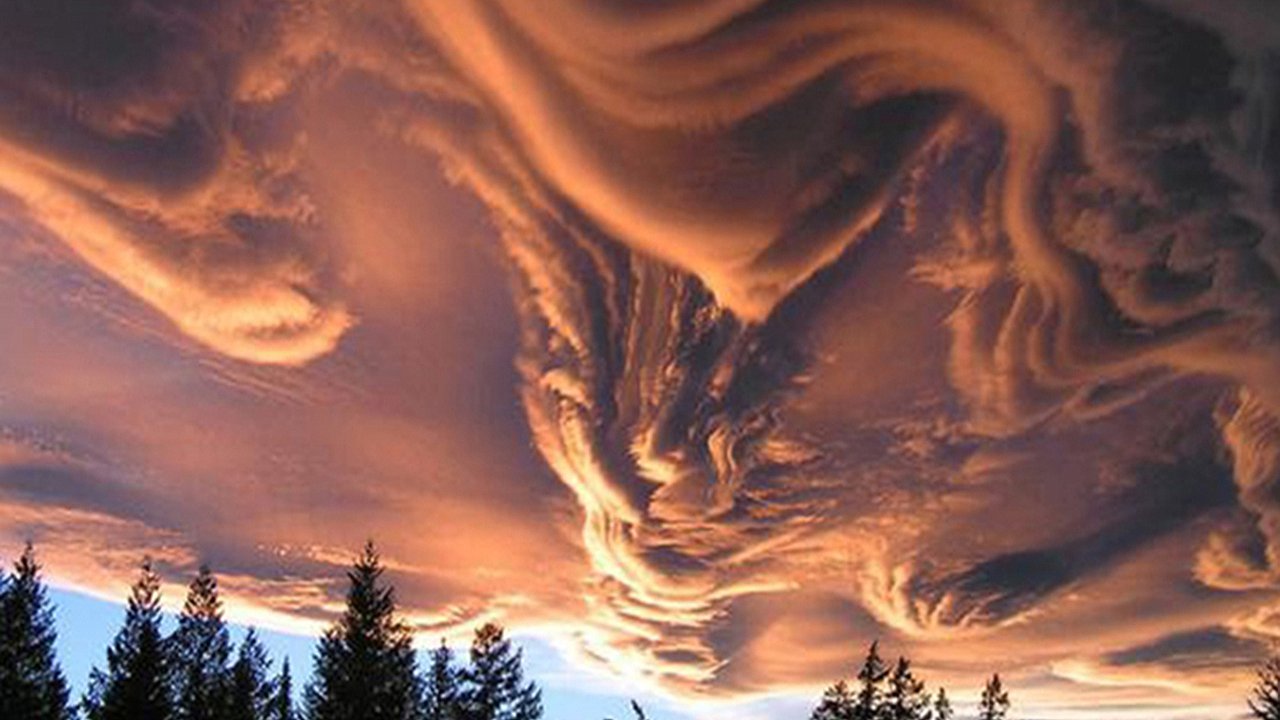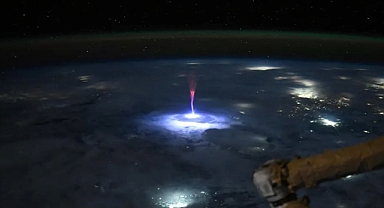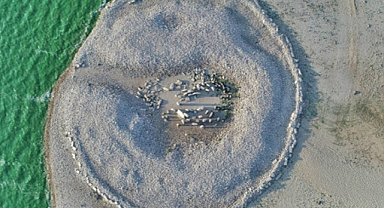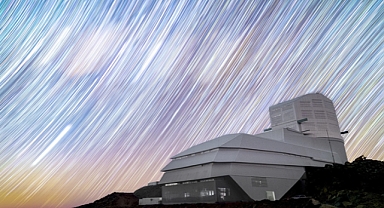1. Morning Glory Clouds
A jaw-dropping weather phenomenon, Morning Glory clouds are long, tube-shaped clouds that roll across the sky. Spanning hundreds of kilometers, they are most famously seen over northern Australia and are often accompanied by sudden gusts of wind.
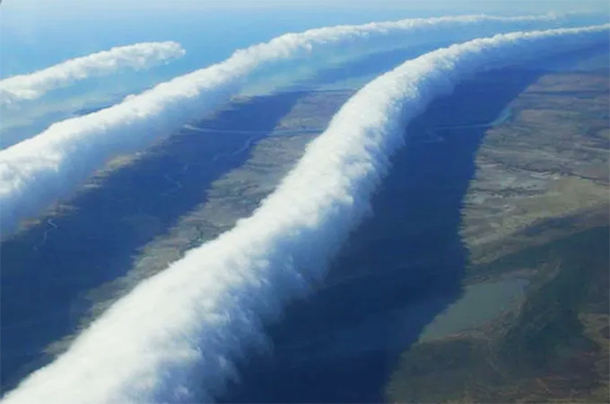 2. Lenticular Clouds
2. Lenticular Clouds
These alien-like clouds hover above mountains and appear as smooth, lens-shaped formations. Pilots avoid them because they are often associated with turbulence, though their stunning appearance is a treat for onlookers.
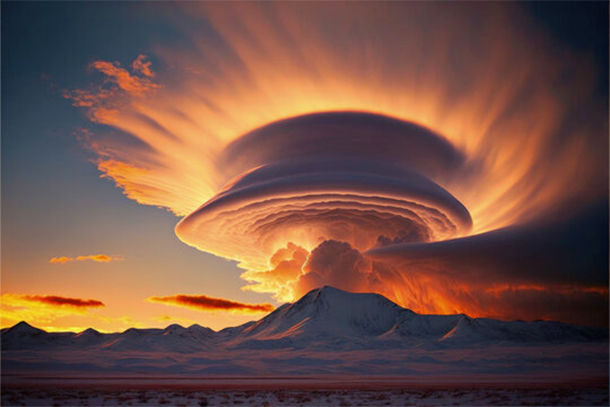 3. Mammatus Clouds
3. Mammatus Clouds
Mammatus clouds look like a cluster of cotton balls hanging from the sky. Formed during severe thunderstorms, these ominous yet beautiful clouds reflect light dramatically, creating golden or purplish hues during sunset.
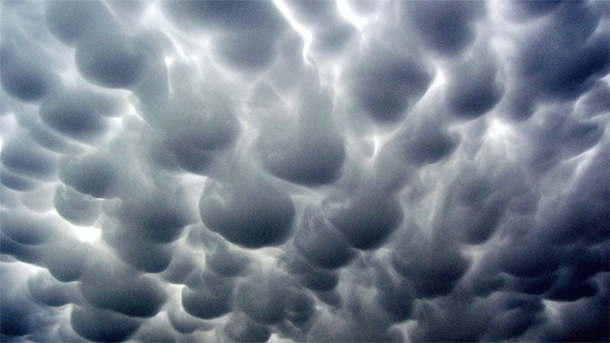 4. Undulatus Asperitas
4. Undulatus Asperitas
Recently classified, this wavy, chaotic cloud pattern gives the impression of an undulating sea in the sky. These clouds are rare and typically form after a thunderstorm, creating a surreal, rippling effect across the atmosphere.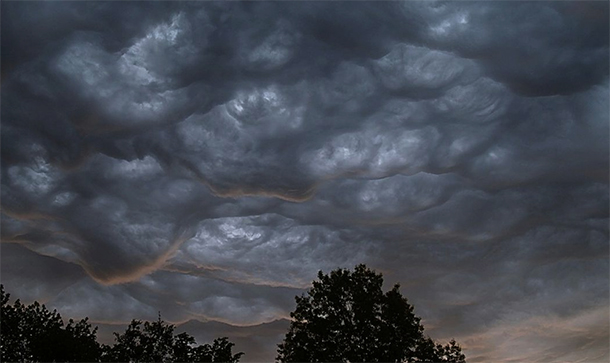 5. Fallstreak Hole Clouds
5. Fallstreak Hole Clouds
Sometimes referred to as “hole punch” clouds, these formations occur when ice crystals cause parts of a cloud to evaporate, leaving a distinct circular gap. The result is a donut-like hole seemingly carved into the sky.
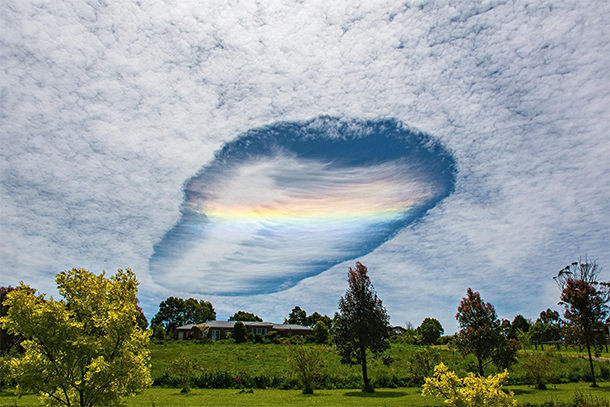 6. Nacreous Clouds
6. Nacreous Clouds
Known as “mother-of-pearl” clouds, these high-altitude formations shimmer in iridescent colors just after sunset or before sunrise. Found primarily near polar regions, their luminous display is nothing short of magical.
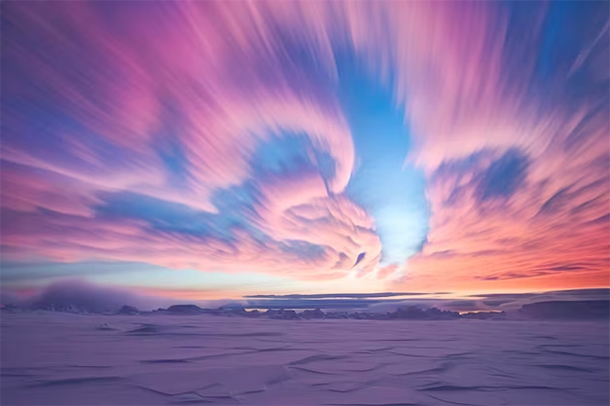 7. Kelvin-Helmholtz Clouds
7. Kelvin-Helmholtz Clouds
Resembling ocean waves, these clouds are formed when two layers of air travel at different speeds, causing the upper layer to curl over like a breaking wave. Their mesmerizing shape makes them a favorite among photographers.
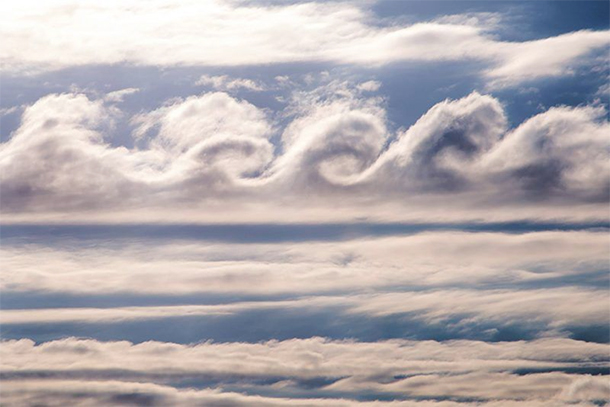 8. Pyrocumulus Clouds
8. Pyrocumulus Clouds
These dramatic clouds form above intense heat sources like wildfires or volcanic eruptions. They rise rapidly into the sky, resembling regular cumulus clouds but with an ominous, dark appearance.
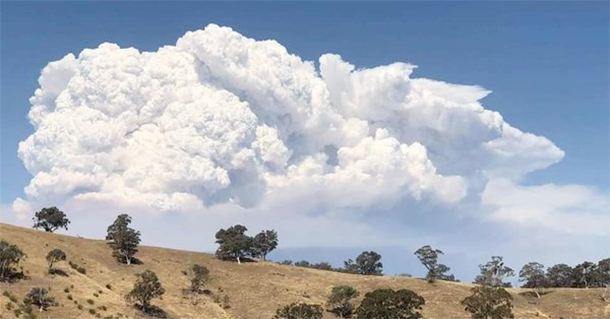 9. Noctilucent Clouds
9. Noctilucent Clouds
The highest clouds in Earth's atmosphere, noctilucent clouds glow with a pale blue or silver light at night. They form at the edge of space and are only visible during twilight, making them a rare and otherworldly sight.
 10. Arcus Clouds
10. Arcus Clouds
These low, horizontal clouds can take the shape of a shelf or roll. Shelf clouds are often seen ahead of thunderstorms, while roll clouds stretch across the horizon like a rolling barrel, sometimes preceding a cold front.
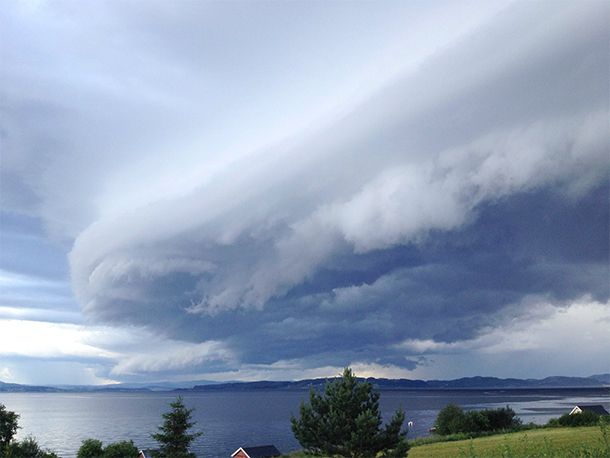
A jaw-dropping weather phenomenon, Morning Glory clouds are long, tube-shaped clouds that roll across the sky. Spanning hundreds of kilometers, they are most famously seen over northern Australia and are often accompanied by sudden gusts of wind.
 2. Lenticular Clouds
2. Lenticular CloudsThese alien-like clouds hover above mountains and appear as smooth, lens-shaped formations. Pilots avoid them because they are often associated with turbulence, though their stunning appearance is a treat for onlookers.
 3. Mammatus Clouds
3. Mammatus CloudsMammatus clouds look like a cluster of cotton balls hanging from the sky. Formed during severe thunderstorms, these ominous yet beautiful clouds reflect light dramatically, creating golden or purplish hues during sunset.
 4. Undulatus Asperitas
4. Undulatus AsperitasRecently classified, this wavy, chaotic cloud pattern gives the impression of an undulating sea in the sky. These clouds are rare and typically form after a thunderstorm, creating a surreal, rippling effect across the atmosphere.
 5. Fallstreak Hole Clouds
5. Fallstreak Hole CloudsSometimes referred to as “hole punch” clouds, these formations occur when ice crystals cause parts of a cloud to evaporate, leaving a distinct circular gap. The result is a donut-like hole seemingly carved into the sky.
 6. Nacreous Clouds
6. Nacreous CloudsKnown as “mother-of-pearl” clouds, these high-altitude formations shimmer in iridescent colors just after sunset or before sunrise. Found primarily near polar regions, their luminous display is nothing short of magical.
 7. Kelvin-Helmholtz Clouds
7. Kelvin-Helmholtz CloudsResembling ocean waves, these clouds are formed when two layers of air travel at different speeds, causing the upper layer to curl over like a breaking wave. Their mesmerizing shape makes them a favorite among photographers.
 8. Pyrocumulus Clouds
8. Pyrocumulus CloudsThese dramatic clouds form above intense heat sources like wildfires or volcanic eruptions. They rise rapidly into the sky, resembling regular cumulus clouds but with an ominous, dark appearance.
 9. Noctilucent Clouds
9. Noctilucent CloudsThe highest clouds in Earth's atmosphere, noctilucent clouds glow with a pale blue or silver light at night. They form at the edge of space and are only visible during twilight, making them a rare and otherworldly sight.
 10. Arcus Clouds
10. Arcus CloudsThese low, horizontal clouds can take the shape of a shelf or roll. Shelf clouds are often seen ahead of thunderstorms, while roll clouds stretch across the horizon like a rolling barrel, sometimes preceding a cold front.

